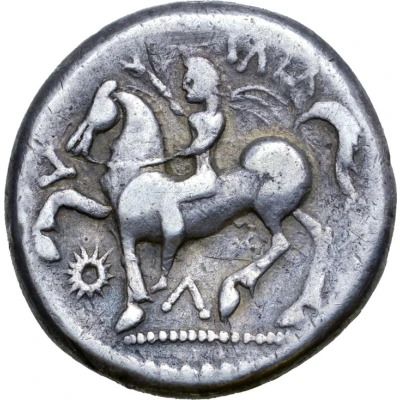


© Roma Numismatics Limited
Tetradrachm Philippsreiter Type 200 BC - 101 BC
| Silver | 12.89 g | 22 mm |
| Issuer | Burgenland Celts (Uncertain Central and Eastern European Celts) |
|---|---|
| Type | Standard circulation coin |
| Years | 200 BC - 101 BC |
| Value | Tetradrachm (1) |
| Currency | Drachm |
| Composition | Silver |
| Weight | 12.89 g |
| Diameter | 22 mm |
| Shape | Round (irregular) |
| Technique | Hammered |
| Orientation | Variable alignment ↺ |
| Demonetized | Yes |
| Updated | 2024-10-09 |
| Numista | N#191308 |
|---|---|
| Rarity index | 100% |
Reverse
Rider on horseback to left; IΛIΛ above, Λ before and below, crown in between front legs.
Lettering:
IΛIΛ
Λ
Comment
Examples of this type:• Example #1 (12.89g, 22mm, 9h; Good Very Fine) - In main image
◦ Ex-Hermann Lanz Collection; published in Kostial #740;
◦ Exhibited by the Staatlichen Münzsammlung München at the 1997 International Numismatic Congress in Berlin; at the Berliner Bank also in 1997; also exhibited at the Luitpoldblock Palmengarten, Munich in 2003 (exhibition #130[obverse]);
◦ Auctioned by Roma Numismatics Ltd, Auction XVIII, 29 September 2019, lot 190. Sold for 850 GBP.
◦ Auctioned by Giessener Münzhandlung, Auction 40, 7 April 1988, lot 20.
Interesting fact
One interesting fact about this coin is that it features a unique blend of Celtic and Greek influences in its design. The obverse side of the coin depicts a stylized head of the Celtic goddess Epona, while the reverse side features a rendition of the Greek god Apollo playing a lyre. This fusion of cultural motifs reflects the complex cultural exchange and syncretism that occurred during the period of Celtic-Greek interaction in Europe.